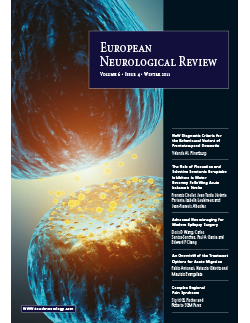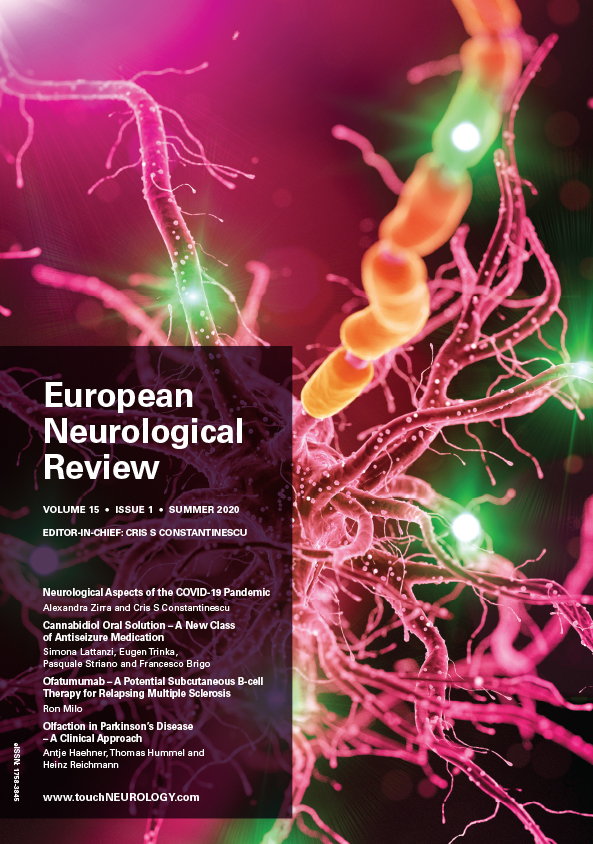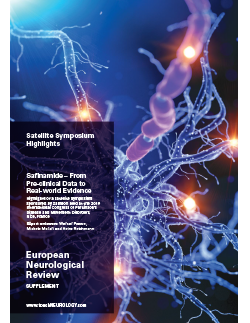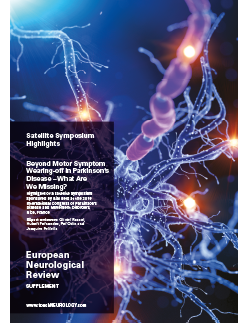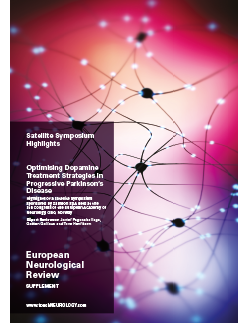EUROPEAN NEUROLOGICAL REVIEW – VOLUME 6 ISSUE 4 – WINTER 2011
We would like to welcome you to the latest edition of European Neurological Review. This Issue covers several major and topical areas, diseases which demand the attention of policymakers and politicians throughout Europe, particularly the neurodegenerative conditions and stroke. Between them they contribute much to the total cost and burden to patients and the payers. […]
Editorial
Alzheimer’s disease (AD) is a progressive neurodegenerative disorder which presents clinically as progressive cognitive impairment, loss of ability to carry out activities of daily living and the development of behavioural problems. Currently, research is focused on new medications to prevent or slow the advancement of the disease, and on techniques for earlier diagnosis. However, to […]
Dementia
Dementia is a syndrome that can have multiple causes and is characterised by deterioration in different domains of cognition, especially memory, language, praxis, visual perception and executive function.1 It is estimated that the number of people with dementia will increase dramatically over the next few decades,2 presenting a tremendous burden for patients, spouses and other […]
Frontotemporal dementia (FTD) is a neurodegenerative disorder mainly affecting the frontal and/or temporal lobes, leading to dementia with prominent behavioural and/or language disturbances. Symptom onset is most often between 45 and 65 years. Arnold Pick described the disease with remarkably focal lobar atrophy in 1892 and it was later termed Pick’s disease by Alois Alzheimer.1,2 […]
The term rapidly progressive dementia (RPD) is used to describe cases with a progression course which usually ranges between weeks and months.1–4 The subacute nature of RPD excludes other conditions with fulminant progression such as infectious or metabolic acute encephalopathies, which progress within hours or days and typically commence as an acute confusional state.
Stroke
In the adult rodent brain, neurogenesis occurs primarily in the subventricular zone (SVZ) of the lateral ventricle and in the subgranular zone (SGZ) of the dentate gyrus, and neurogenesis persists for the lifetime of the animal.1–9 In the adult human brain, neurogenesis occurs in the hippocampus and SVZ.10 Studies in experimental stroke demonstrate that focal […]
Recovery of neurological functions after a stroke has long been a puzzling question for clinicians and scientists. On the one hand, clinicians knew from their own practice that partial recovery was very often observed after a stroke and on the other hand, it was well known that neurons, when destroyed after ischaemia, were not restored […]
Epilepsy
Drug-resistant epilepsy accounts for more than 30 % of epileptic patients.1 Alternative treatment options are resective neurosurgery, deep brain stimulation and invasive vagus nerve stimulation (VNS).2 Invasive stimulation of the cervical branch of the vagus nerve has been shown to be highly effective in clinical trials, with a responder rate of approximately 60 %.3,4 Surgically […]
When neurosurgeons first attempted to treat epilepsy by means of surgery in the late 1800s, they were operating on ‘invisible’ lesions. Without any imaging or electrophysiological technology, MacEwen and Horsley operated under the principles of functional cerebral localisation developed largely by John Hughlings Jackson.1 Epilepsy surgery has come a long way, as now epileptologists and […]
Headache
Frovatriptan is a 5HT1B/1D receptor agonist1 and has been developed as a triptan with a long terminal half-life (t½).2 Recurrence, the relapse of migraine headache after an initial successful treatment, is a major problem in migraine treatment.1 After treatment with other triptans, recurrence occurs in 30–40 % of treated attacks.1 The triptans, apart from frovatriptan, […]
Migraine is a common disabling headache disorder, affecting about 12 % of the US and other Western populations. The social and economic impact of the disease is considerable. It is more prevalent in women than in men, and in the age range 30–50 years.1,2
Pain
Complex regional pain syndrome (CRPS) is a painful disorder of the extremities, characterised by sensory, autonomic, vasomotor, motor and trophic disturbances (see Figures 1 and 2). CRPS mostly occurs after a trauma, such as a fracture or an operation, but can also develop without a preceding event.1,2 In the Netherlands, approximately 4,300 patients develop CRPS […]
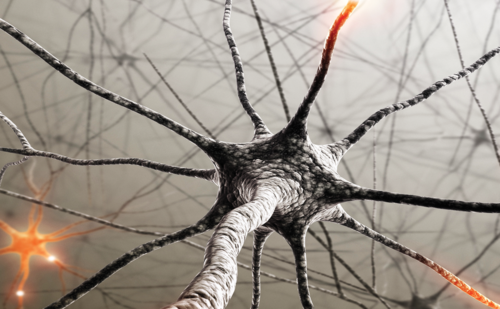
Trending Topic
Opioid therapy has become a mainstay for the treatment of chronic pain, despite evidence that these medications may be ineffective and even unsafe in this patient population.1,2 In patients with chronic back pain, the use of first-line medications (non-steroidal anti-inflammatory drugs and acetaminophen) declined by 48% from 1999 to 2010; simultaneously, there was a 53% rise […]
Journal Archive
European Neurological Review is a peer-reviewed, free-to-access, bi-annual neurology journal comprising review articles, case reports, practice guides, theoretical discussions, and original research. It features balanced and comprehensive articles written by leading authorities, addressing the most important and salient developments in the field of neurology in practical terms.
Latest articles videos and clinical updates - straight to your inbox
Log into your Touch Account
Earn and track your CME credits on the go, save articles for later, and follow the latest congress coverage.
Register now for FREE Access
Register for free to hear about the latest expert-led education, peer-reviewed articles, conference highlights, and innovative CME activities.
Sign up with an Email
Or use a Social Account.
This Functionality is for
Members Only
Explore the latest in medical education and stay current in your field. Create a free account to track your learning.


